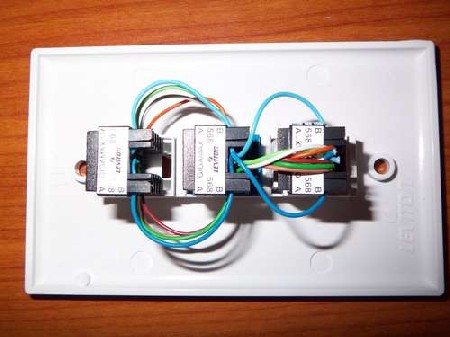The Leyden jar capacitor posted the other day fails to compare to what [FastMHz], one of the members over at the 4HV.org forums, has been busy building, a 24kj capacitor discharge bank. This capacitor bank will be configured for 4500v @ 2400uF and can be charged up slowly using microwave oven transformers. It can then release all its stored energy in under a millisecond through a triggered spark gap. This allows for some pretty big sparks as seen in this video, we are not sure about the laughing in the video maybe the power has gone to his head? Continue reading “24kJ Capacitor Bank”
Author: Jason Rollette30 Articles
How-to: Thermite Hard Drive Destruction

After the overwhelming response to the Hackit we posted about automated hard drive destruction last fall, we finally decided to test out some thermite hard drive destruction ourselves. This has been done on The Screen Savers but they did not show up close results of the platters. So, aluminum and black iron oxide were procured through eBay, and until it arrived we watched some YouTube videos that showed a lot of fire and no real results. We decided to see what it would take to completely obliterate a drive.
With the amount of personal data stored on your computer, we all understand the importance of destroying the data that is stored on the platters of a hard drive before disposing of it. There are many ways to destroy a hard drive; software, physical disassembly, drills, hammers, magnets/electromagnets, and acid, but none are quite as outrageous and dangerous as thermite. That’s what we’re going to do here today. Follow along for pictures and videos of the results.
60 Watt Solar Panel Built From Cells

Our love for solar projects continues on with this method to make your own solar panels. [Mike] built a 60 watt solar panel from individual solar cells he purchased off eBay. Procuring parts off of eBay normally causes others hardship when they try to duplicate the project, however in this case there are so many types of cells people can use to produce their own unique solar panel. Even cells that are extremely damaged my still be used, as in this example. To charge a 12 volt battery the number of cells in series just needs to be 16-18 volts, and the rest in parallel will supply more current. Charging a battery without a charge controller is not recommended, but commercial ones are easily had. Those not interested in jumping all the way in with solar may want to test the waters by building their own panel and putting it to use as a charging station for your portable gadgets.
Passive Network Tap
Making a passive network tap can be an easy and inexpensive undertaking as shown in this Instructable. Passive monitoring or port mirroring is needed because most networks use switches which isolate the network traffic and this does not allow for the entire network to be monitored. This example uses a single tap, using multiple taps will provide access to the full-duplex data separately. By using two taps you are able to monitor inbound data that is passed through one tap, and outbound data that is passed through the other tap. Separate taps are desired because most sniffer software handles half-duplex traffic only and requires two network cards for full-duplex.
High Altitude Photographic Balloon

[Earl Foster] recently completed his 4th high altitude photographic balloon (HAPB-4) launch. This launch reached a peak altitude of 106,384 feet, and lasted about 3 hours. The final weight of the capsule was 5lb 3-3/8 oz, with all the electronics, GPS, digital camera, and HD video camera. His balloons operate under the exempt rules of FAA Part 101 subpart a governing unmanned balloon flight. This program has been setup to encouraging interest in science, mathematics, and engineering through unmanned ballooning. HAPB-4 uses a Parallax SPIN Stamp microcontroller, this multicore chip offers eight 32-bit processors (cogs) sharing 32kB RAM and ROM. Having eight separate COG’s allows him to log GPS data, control the camera, log and monitor sensors, and control LCD functions simultaneously with minimal hardware. During this flight he did have some equipment failures, but he was still able to capture some nice pictures.
Free Parking Garage Access
This hack is an interesting twist that will allow you to get in or out of some parking garages when the attendant isn’t looking. Using something metal to trip the parking lot’s proximity sensor that is meant to let cars out automatically you can get into the garage or vice-versa without opening your wallet. A magnet from a hard drive might work a bit better because it is able to trip multiple types of sensors, but for this hack any kind of metal will work. This proximity sensor is a high–frequency oscillation type, so anything that attenuates, varies the frequency or stops the oscillation trips the sensor. When you can’t find a place to park, this hack will certainly impress your friends more than this method, but your street credibility could quickly turn into never lived down stories, if you end up driving over tire strips and ruining your tires, get a huge parking or trespassing ticket, or worse yet get your vehicle towed!
Electric Screwdriver Robot Hand

Here’s an interesting grabber hand built for use on an ROV. This grabber is a novel use of a very common and extremely cheap electric screwdriver, that is probably found in everyone’s toolbox. It is also a great way to reuse that small electric screwdriver you have kicking around that uses proprietary batteries that are not worth replacing. Many of the ROV’s covered previously could benefit from such a powerful device built from very common materials off his parts list. Because the screwdriver was extremely cheap the designer chose not to completely seal the housing.
It seems like this simple design that could be used in many robotic projects and by simply changing the jaws could yield other creative uses. The first thing that comes to mind is to upsize this hack into something bigger and stronger. Either way, you might not want to get your fingers in there.













